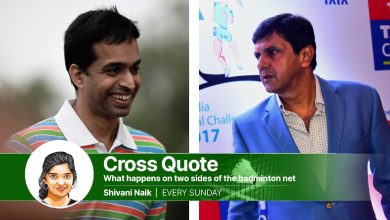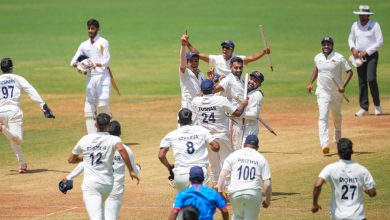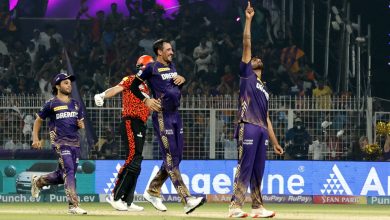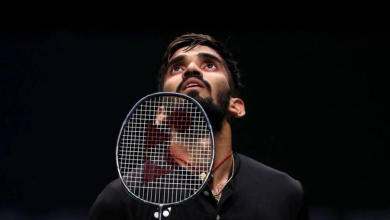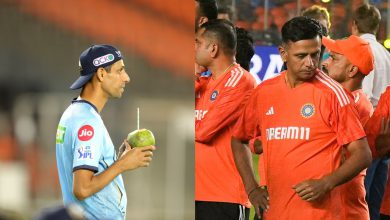Why India’s top stars make pitstop in Russia’s Dagestan, dubbed wrestling capital of world, on their way to Olympics | Sport-others News

Aman Sehrawat was 11 when his uncle dropped him at the Chhatrasal Stadium, not too long after he had lost both his parents.For a decade since, the prodigious lightweight wrestler has been training – and staying – at the fabled, and unforgiving, akhara in North Delhi. But last month, after his coaches sensed the urgency to upskill, Aman stepped outside the familiar confines for the first time.
His choice of destination wasn’t surprising – Dagestan.
More design than coincidence, Aman – the junior world champion, senior Asian Champion, Asian Games bronze medall and the only Indian to win a title so far this year – was simply following the footsteps of all the famous Chhatrasal alumni.
For years, India’s top male wrestlers – Sushil Kumar, Yogeshwar Dutt, Bajrang Punia, Ravi Dahiya and Deepak Punia – have flocked to the Eastern European powerhouse. Even before the Tokyo Olympics, where India won two wrestling medals, the entire team camped in Russia before flying to the Japanese capital directly from there.
They go there in search of better quality sparring partners and also because training only at home often stalls their progress.
If Chhatrasal was a finishing school, the wrestling hubs in Russia – Dagestan in particular but also places like Vladikavkaz and Yakutia – have been the Ivy League-like institutions where they hope to attain mastery over their art.
“To become a national champion, you leave your local akhara and do everything you can to join Chhatrasal,” says Deepak, the 86 kg category World Championship medall who came within six seconds of a Tokyo Olympics bronze. “And if you want to win a big international medal, the Olympics or World Championship, you go to Russia.”
Like Aman, Russia was the first overseas training stop even for Deepak back in 2020. Since then, he’s gone there every year. And if all goes as per plan, he’ll be headed to Dagestan once again before the Asian Olympic Qualification tournament takes place in April.
Another Indian currently at the place dubbed as the wrestling capital of the world is Bajrang, the Tokyo Olympics bronze winner who is charting his way back into the team after spending a major part of the last year leading the protests against former Wrestling Federation of India president Brij Bhushan Sharan Singh.
“Here, it’s only wrestling,” Bajrang says over the phone from Dagestan, in the South of Russia. “There’s no other sport. Only UFC and wrestling. UFC and wrestling.”
Football and ice hockey may dominate Russia’s vast sporting landscape. But in Kayakent, Makhachkala and Khasavyurt – the wrestling towns in Dagestan – the sport is a centuries-old custom. Just like in Haryana, it is also a way of life.
This similarity, however, is not what appeals to India’s wrestlers. They choose Russia because of the differences. In playing style, technique, sparring and climate.
“Broadly speaking, world wrestling has three main powerhouses in men’s freestyle: the USA, Iran and Russia,” says 2012 Olympics bronze medall Yogeshwar. “The wrestling philosophy of India and Iran is very similar. From the way we stand on the mat to how we fight and the speciality – underhooks – is all quite identical. So, if you go to Iran, you won’t learn anything new.”
Hence, the US – the Olympic training centre in Colorado Springs being the preferred choice – and Russia are the two countries India’s wrestlers frequent regularly.
“I would give the US 11 on 10. Be it training, facilities, sports science, food, water. A to Z. Everything top class,” says Deepak, who just returned from a training stint there. “Russia has bare minimum facilities and a very old system. But they have the best sparring partners.”
And so, like moths to flame, they flock to the mountains of Dagestan. Another attraction is the emphasis on technical aspects, which makes Russian wrestlers irresibly good in every mat position apart from the takedowns and throws.
Not the one for exaggeration, Bajrang says it is a ‘different universe’.
“Even the local wrestlers are world-class. You will barely notice much difference between the number 1 ranked wrestler and number 10. And then, you will also have some of the best in the world coming here to get better,” Bajrang, who has been going to Russia since 2018, says.
Indian wrestling contingent ahead in Moscow ahead of the Tokyo Olympics. (Special Arrangement)
At the Rio Games, the last time when Russia competed without any restrictions at the Olympics, Dagestani wrestlers won five medals. Russian emigres have won medals for former Soviet bloc nations and even countries like Bahrain, Lebanon and Hungary.
”In my weight category alone, there are four wrestlers from Russia who represent other countries,” says Bajrang, referring to reigning world champion Iszmail Muszukajev, who competes for Hungary, Abdulmazhid Kudiev (Tajikan), Alibeg Alibegov (Bahrain and Umidjon Jalolov (Kyrgyzstan).
It’s not a one-way relationship, though. In 2021, Bajrang was chatting with two-time Olympic champion Roman Vlasov on social media. The casual conversation led to an unexpected invite to Moscow, where Bajrang trained with Vlasov.
This would’ve been a routine training session if not for the fact that Vlasov is a Greco-Roman wrestler while Bajrang is a freestyle champion. It’s like getting a rifle and pol shooter to train together; same sport in theory but vastly different in practice.
Yet, the session turned out to be eye-opening for the Indian. “Training with a Greco-Roman wrestler means my upper-body holds improved. I got to learn their techniques with grips and ground defence,” Bajrang says of the 2021 stint.
//www.instagram.com/embed.js
Bajrang has a dedicated fan base now and there are times when the crowd cheers for him even when he’s competing against a local favourite. But this time, he’s there not as a world wrestling star but as a man hoping to resurrect his career.
Training, he hopes, will involve a lot of ‘lakdabadi’ – translated loosely as quick back-and-forth. At the Asian Games, speed deserted Bajrang after he spent most of 2023 away from the mat. High-intensity sparring in Dagestan, he expects, will help him get in shape faster for the selection trials expected to be held around this time next month for the Olympic qualifiers.
“Agar zyada lakdabadi hogi kushti mein, toh zyada benefit hoga (It’ll be more beneficial if there’s quick back-and-forth while wrestling),” Bajrang says. “If my partner is attacking, I’ll defend; if I attack, he’ll defend. Since the wrestlers here are experts in such technical wrestling, the quick transitions improve your game as well apart from increasing speed and stamina.”
//www.instagram.com/embed.js
For Deepak, situational practice is high on the agenda ahead of the qualifiers apart from the usual skill top-ups involving mat training, grips, explosive power and holds.
“The coaches and wrestlers there spend a lot of time researching match situations – I am pushed into this corner, how can I save myself; the best areas to score points and ways to wriggle out of a hold and not concede,” he says.
Deepak and Tokyo silver medall Ravi have gone a step further – not only do they visit Dagestan, but they even got Dagestani coaches relocated to Delhi so that the lessons never stop.
Ahead of the Tokyo Games, Murad Gaidarov and Kamal Malikov – who briefly trained Sushil Kumar as well in his failed comeback bid for the 2020 Olympics – were stationed at Chhatrasal.
Malikov is still in India, attached to the Army wrestlers which means Deepak still seeks his help as and when needed. Bajrang, too, is soon likely to join forces with a Russian coach, Ali Shabanov.
“They (Russian coaches) bring expertise which we lack in India,” admits Lalit Kumar, who has coached Aman from the time he was admitted to Chhatrasal 10 years ago. ”That’s also why we have sent Aman to Russia. He aspires to become an Olympic medall. Training in Dagestan will open doors to a new world.”
Why Russia:
The USA, Russia and Iran are the three main wrestling hubs for men’s freestyle. India and Iran’s styles are the same, say wrestlers, which means they don’t learn anything new training alongside them.
And while the US provides top-class facilities, Russia has the best sparring partners. That along with the emphasis on technical aspects of the sport appeals to the Indian wrestlers.
Why Dagestan
A small province in the south of Russia where the Caucasus mountains meet the Caspian Sea, Dagestan is dubbed as the wrestling capital of the world.
Smaller than Haryana in size and population, the wrestlers from there have won as many medals in men’s wrestling in one Olympics – five, at the Rio Games – as India has managed in this century.
Wrestlers from Dagestan represent not just Russia in international events, but also change nationalities and play for other nations.
Currently, in Bajrang’s weight category (65kg) alone, four Dagestani wrestlers represent other countries. This includes the reigning world champion Iszmail Muszukajev, who competes for Hungary, Abdulmazhid Kudiev (Tajikan), Alibeg Alibegov (Bahrain and Umidjon Jalolov (Kyrgyzstan).



